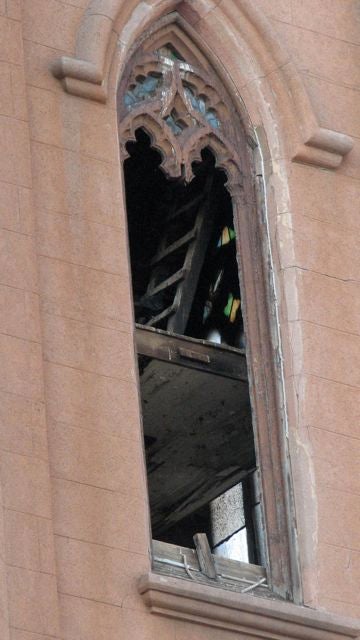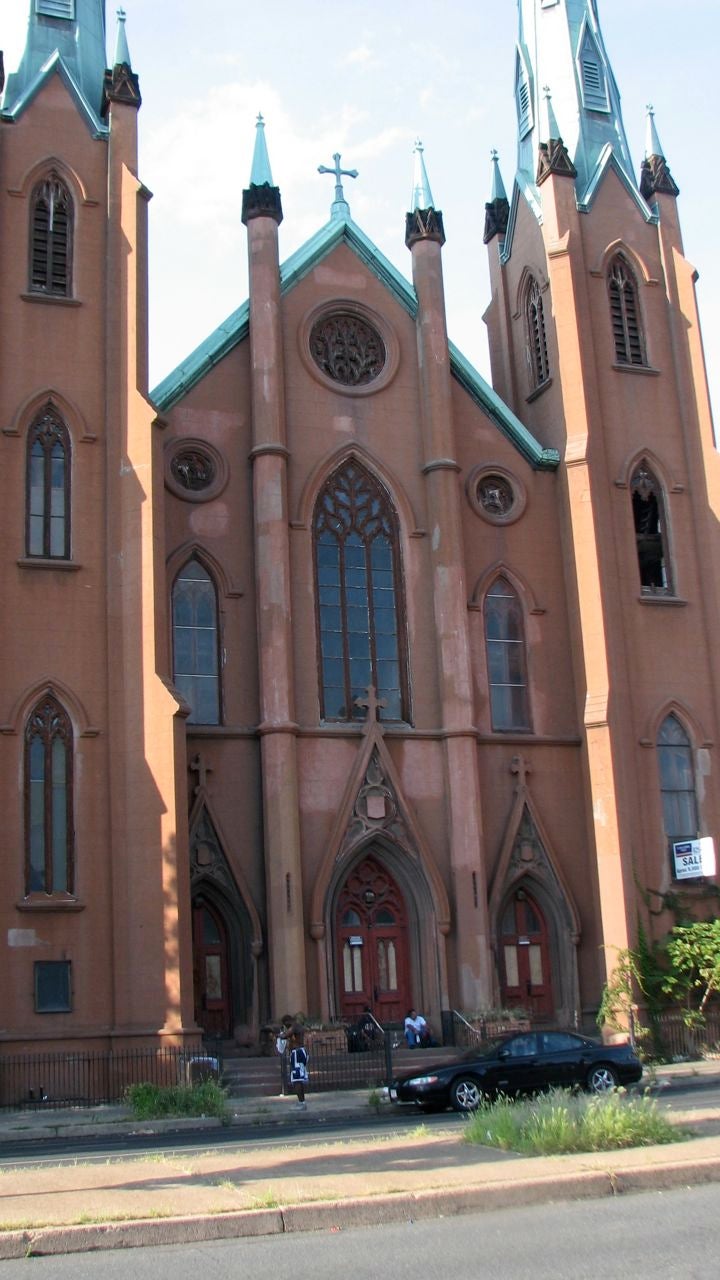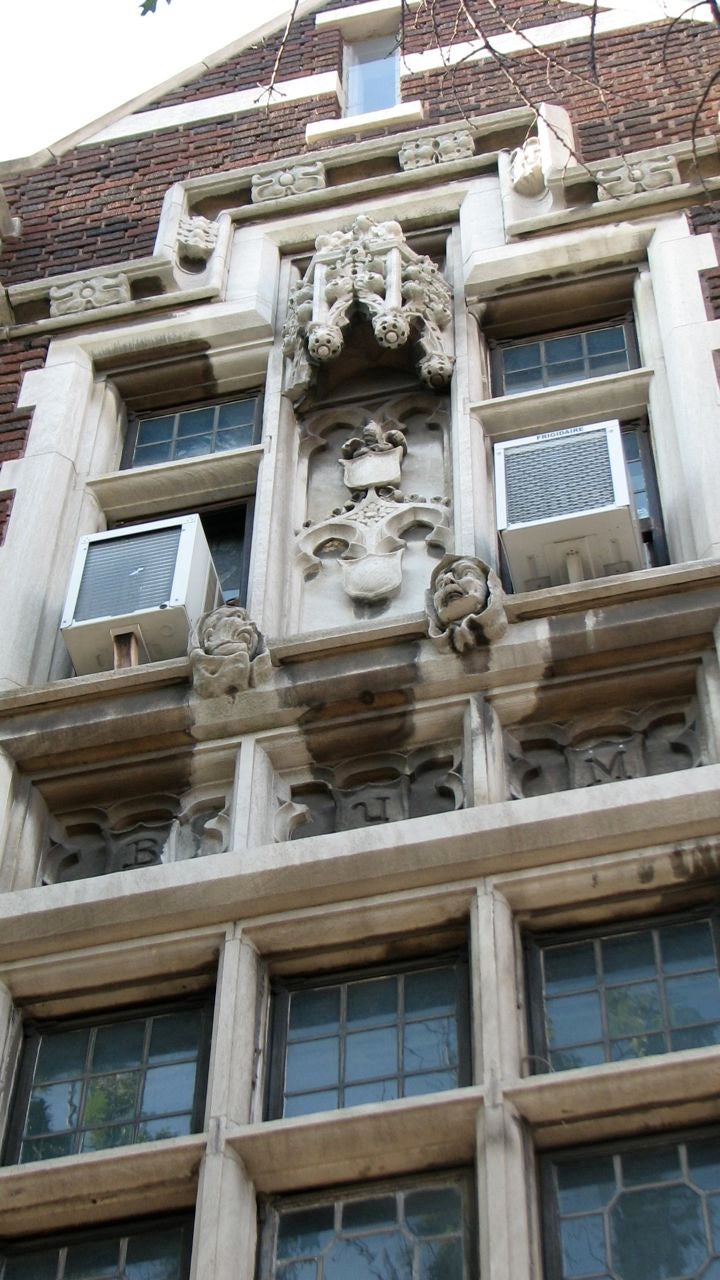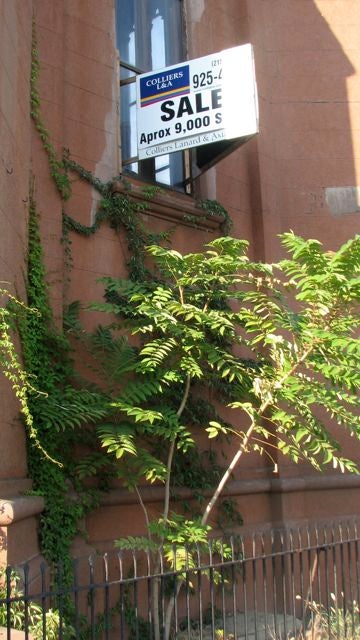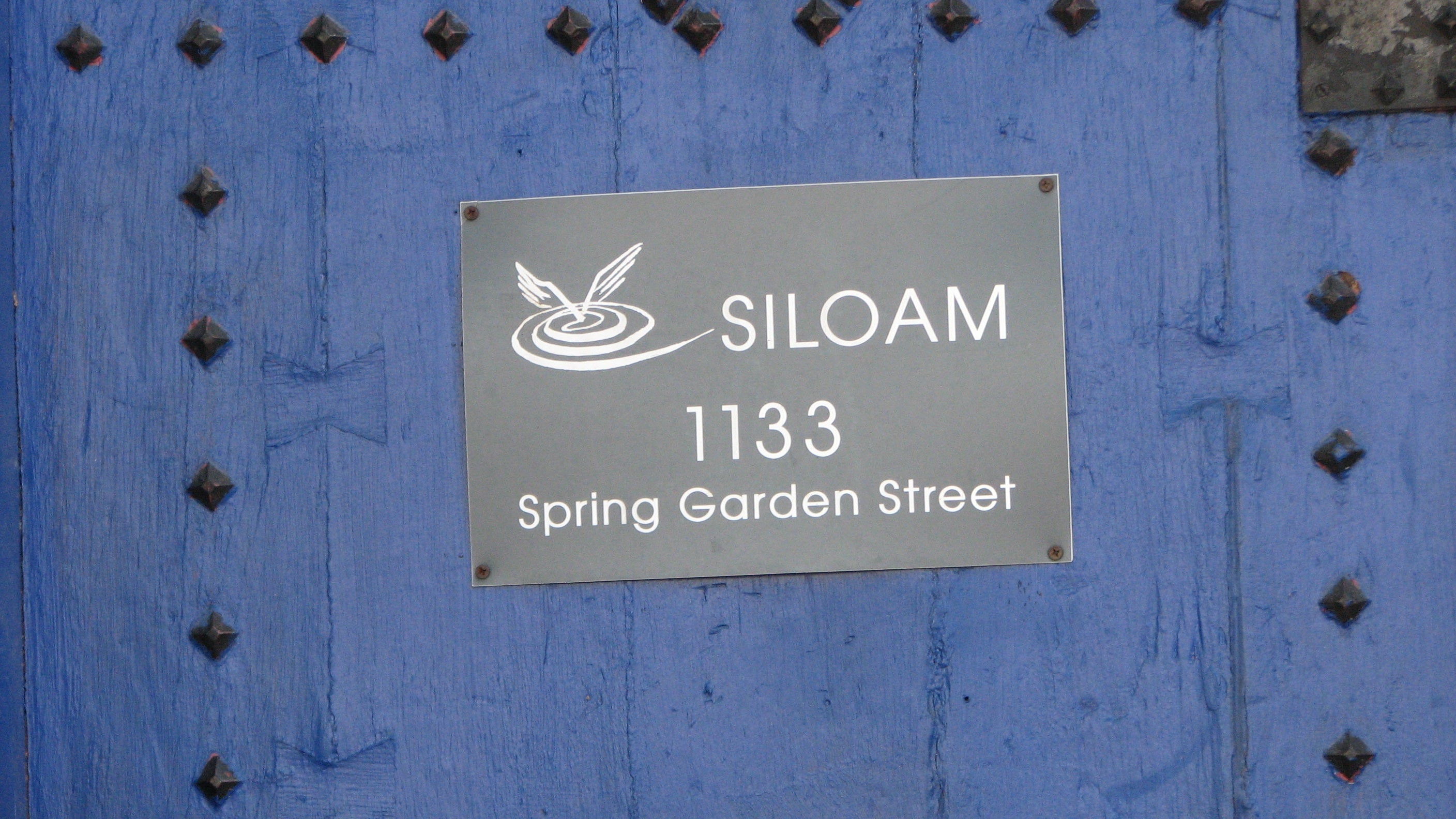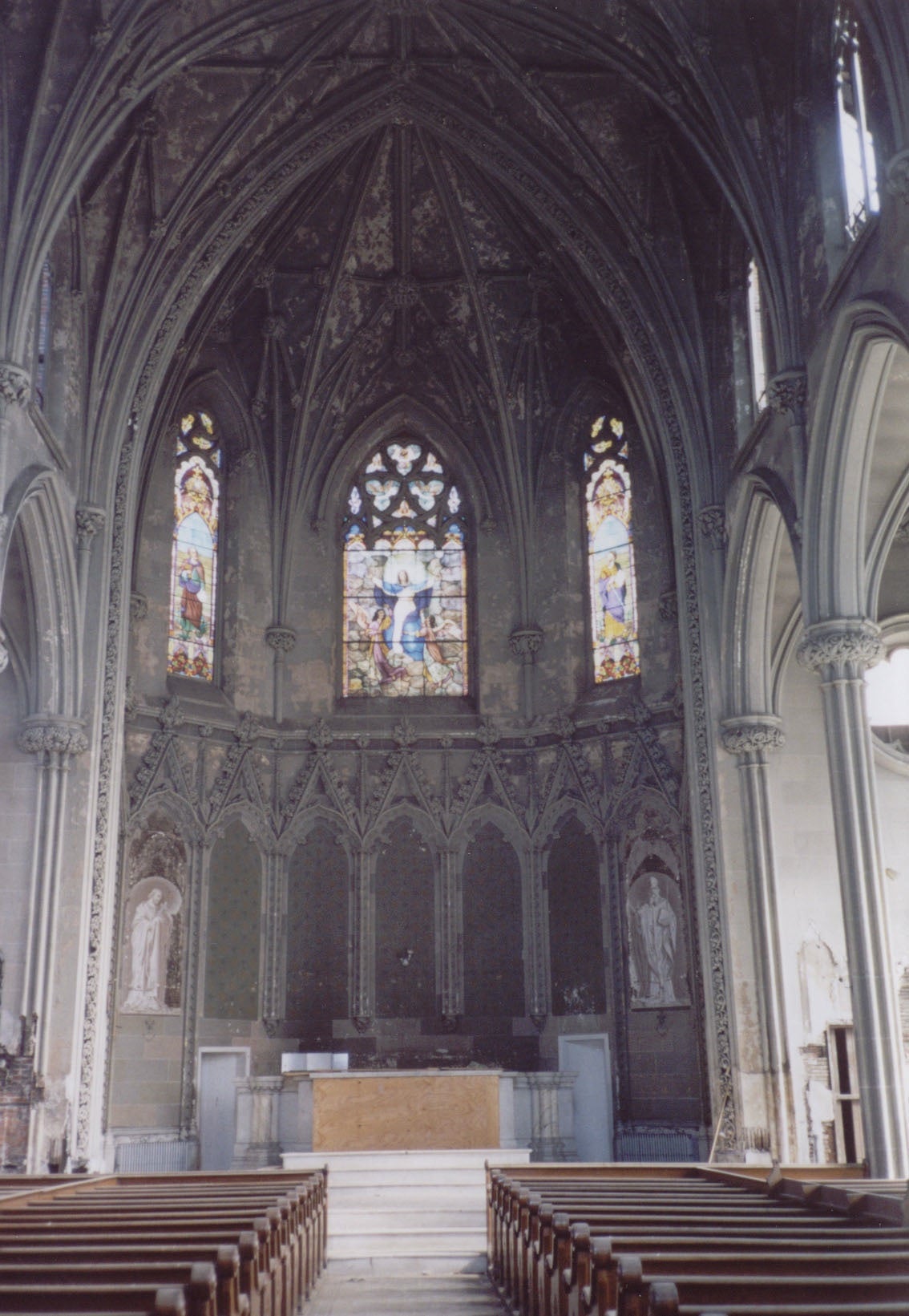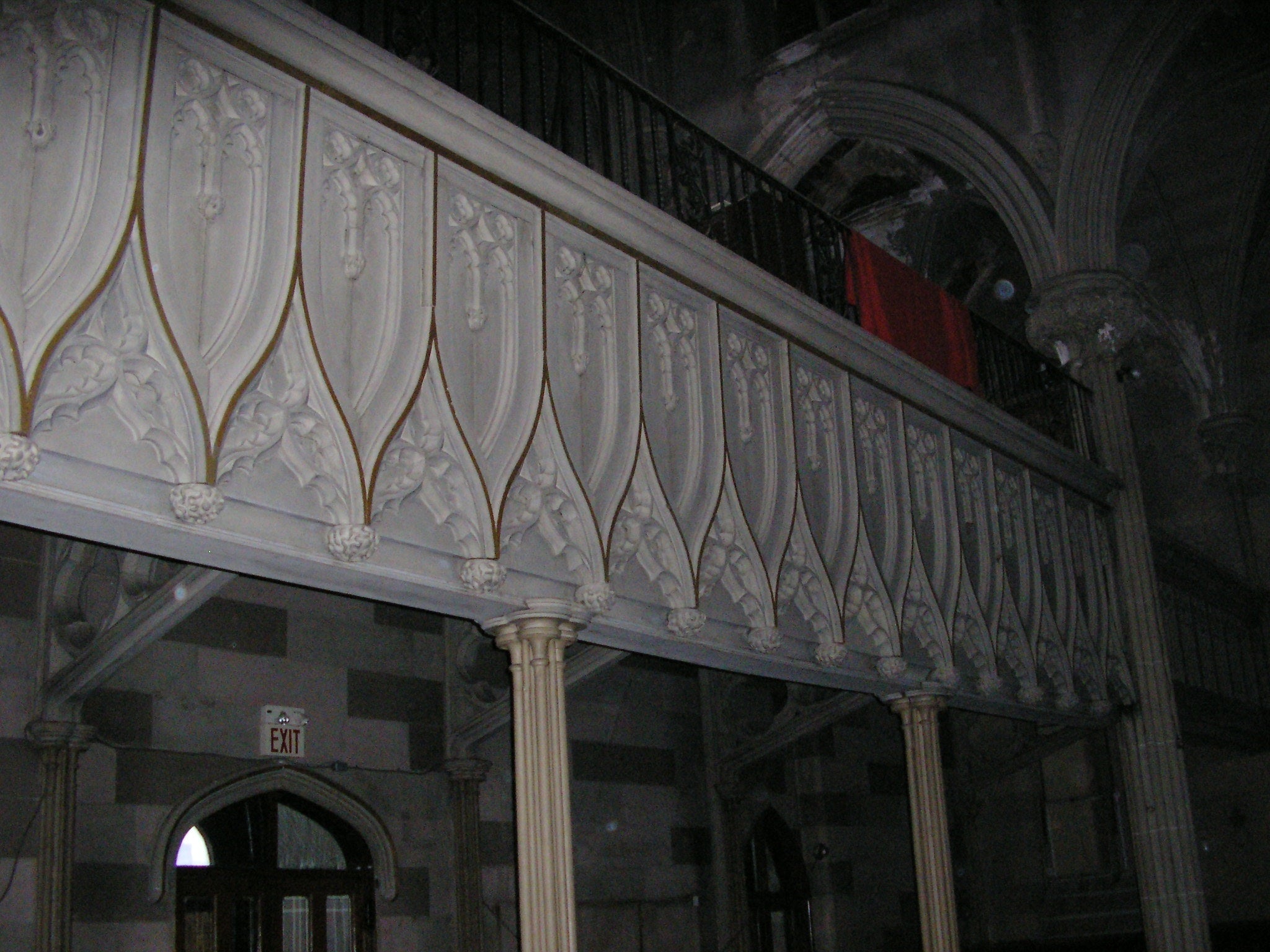Without a buyer, historic church remains in limbo
The Church of the Assumption, which was placed on the Philadelphia Register of Historic Places in May 2009, remains a source of contention between the owners and the surrounding community, as the condition of the building continues to decline.
The situation points up the difficulties in finding the proper reuse of buildings in need of historic preservation and the limitations of agencies and small non-profits that may own or occupy them.
Siloam, a social service agency for people living with HIV/AIDS, owns the church building and the adjacent rectory and convent. It had sought a demolition permit for the church in order to rebuild on the site or create more parking space. On Aug. 24, Siloam will go before the Philadelphia Historical Commission to argue that it has not been able to find a buyer for the building and can’t afford the costs of restoration.
A leader of the West Poplar Neighborhood Advisory Committee said, however, that there have been interested buyers. The current owners just aren’t motivated to sell.
Pigeons and rain
A sale sign hangs from a first-floor window of the church on the 1100 block of Spring Garden Street, and weeds spring from the sidewalk below it. The window on the second floor is missing glass or plywood, and pigeons and the elements easily pass through.
The property has been on the market since January, said Joe Lukach, executive director of Siloam. But no buyers who can afford the restoration “have surfaced,” he said.
The glass on the second-floor window has been missing for years, he noted, and “there are holes in the roof since before we purchased it. The church sat empty and abandoned for 14 years,” Lukach explained.
The building needs between $5 million and $6 million in renovations, he said. Potential buyers have not been able to come up with “a proposal to make it worthwhile to put a significant amount of money into it, use it, and get the money back. There are many more attractive buildings sitting on the market without buyers.”
At the Historical Commission hearing next week, “we hope we will be able to get an understanding that the organization has a financial hardship and is suffering financially as a result of keeping the building up,” he said. Siloam’s goal is to get the permit to knock it down.
Lukach said it was beyond the financial capability of the agency to even seal up the building. “We have a small budget of about $600,000. We have had benefit cuts, salary cuts, and there are positions we are not filling because of the economic climate. If we did have additional funds, we would be looking at providing more services.”
Preservation efforts
Andrew Palewski has led the community effort to preserve the Church of the Assumption and wrote the nomination that resulted on its listing on the Philadelphia Register.
The church was designed and built in 1848-49 by Patrick Charles Keely, the most prolific ecclesiastical architect in 19th-century America. Edward Furey, founder of the Keely Society that is dedicated to documenting the architect’s work, said the Spring Garden Street church is “most likely the last surviving example of the first year of his church designs.” It is also historically significant, according to Furey, because it was consecrated by John Neumann and it was the church where Katharine Drexel was baptized. Both became Catholic saints.
Palewski is continuing his efforts to preserve the church. He has nominated it as an endangered historic site at the state level, and the building was featured on the cover of Pennsylvania At Risk, published by Preservation Pennsylvania as “one of the most significant historic landmarks in the state to be threatened by demolition,” Palewski said.
Siloam recently requested the support of the West Poplar NAC in its hardship claim, Palewski said. “But as the primary civic association for the neighborhood, the NAC has consistently supported the preservation of the church since the threat of demolition arose early last year.”
According to Palewski, there have been parties that were very interested in buying the church building. “Several have contacted me, and under normal circumstances I’d have no doubt that the church would be sold by now.
“But the owner is pursuing a hardship claim with the Historical Commission. And to support this claim the owner must demonstrate, among other things, that it has tried to sell the building to no avail. There is a ‘for sale’ sign on the building, an agency listing the property, and an agent representing the owner. But at the end of the day, the owner holds all of the cards, and if they’re not motivated to sell, then the property is not going to sell.”
Interior changes
Palewski noted that when the Philadelphia Archdiocese vacated the church in 1995, it removed the altar and stained-glass windows. But the other elements of the interior – the pews, carved woodwork, and ornate plaster with decorative painting — remained intact.
The interior was still in that condition in spring 2009, when a Philadelphia art dealer, Ellen Schicktanz proposed buying the building and setting up an art gallery, Palewski said. “But by the time Mrs. Schicktanz was given access to the site a few months later, most of the interior elements had been destroyed. The historic details that attracted her to the space were gone, and so was her interest in buying the church,” Palewski said.
At the time, Ellen Schicktanz owned an art gallery at 16th and Ritner Streets but was looking for space to expand, her husband Bill explained. They saw photos of the church taken by the Community Design Collaborative in 2007 that showed the interior still intact. Ellen Schicktanz hired an architect, consulted an appraiser, and contacted Lukach to take a look at the building. “Ellen was genuinely interested in the church,” Bill Schicktanz said.
But when Luckach brought them inside, “they were in the process of the demolition of the interior,” Bill Schicktanz said. Detailed plaster ornamentation on the columns had been removed, pieces of marble and wood flooring had been taken up and stacked. “It was apparently a salvage job. Everything had been taken apart,” Bill Schicktanz said.
“At one time it may have been economically feasible” to restore the church, he said. “If the interior had been kept intact, I think it would have been usable for an adaptive reuse. When we went through and saw the deplorable condition, there was nothing worth preserving.
“If Lukach had been genuinely interested in selling the building, it would have made sense that he wouldn’t do interior demolition until potential buyers had looked at it,” Bill Schicktanz said.
Ellen Schicktanz, in the meantime, has begun working on a new art gallery in another building – a former church.
Palewski noted that at the time of the Church of the Assumption’s historic designation, a Philadelphia City Council law protecting the interiors of historic sites had not yet been passed.
Lukach said Siloam had received a permit for the interior demolition and had actually begun the work before the church was listed on the Philadelphia Register. “We were looking to take the church down. There was no reason not to try to salvage what we could,” he explained.
There were no buyers interested in the building at that point, he said, because the price of rehabilitating the church was too high. Ellen Schicktanz was the only potential buyer who brought her own architect to see the property, he said.
“Others, once they looked at it, realized it was too big of a challenge,” Lukach said.
According to Palewski, “What this building needs is a new steward. And the frustrating thing is that they’re out there. But it’s impossible for a community to sell a building that it doesn’t own.”
Contact the writer at ajaffe@planphilly.com.
WHYY is your source for fact-based, in-depth journalism and information. As a nonprofit organization, we rely on financial support from readers like you. Please give today.



